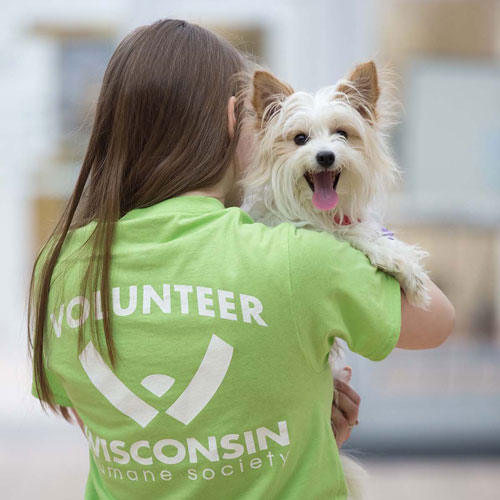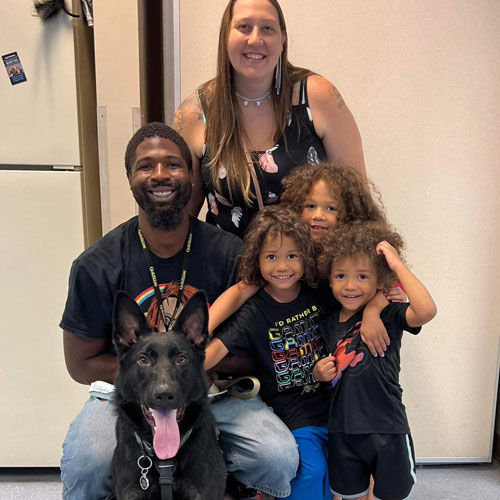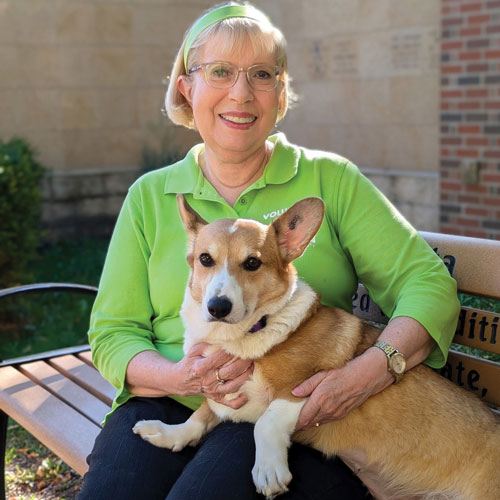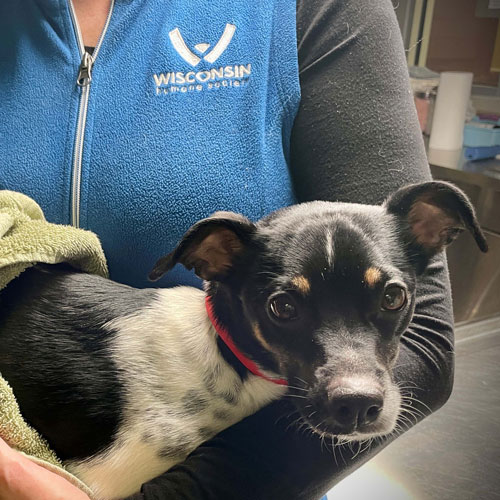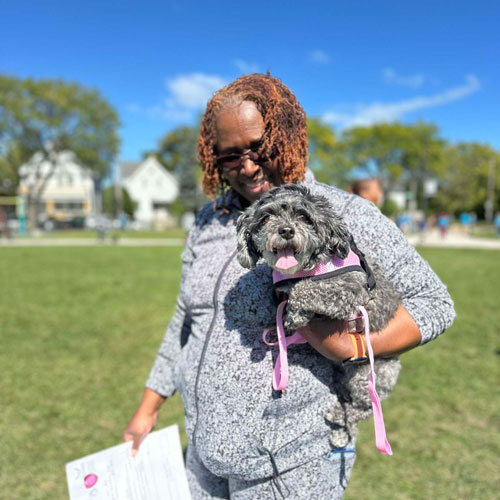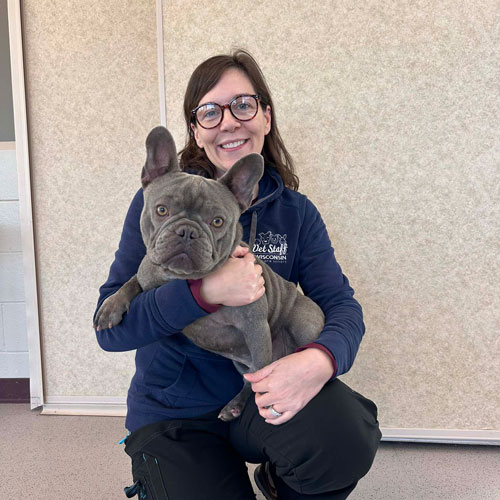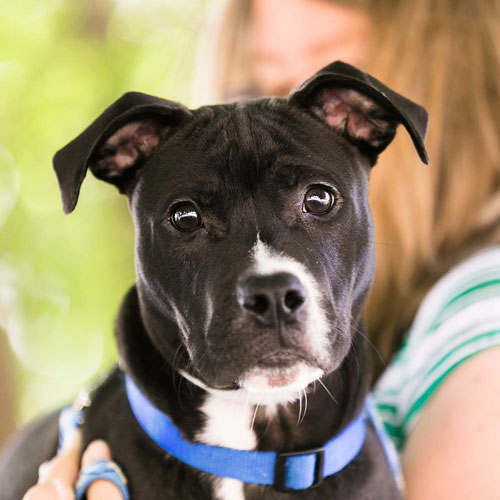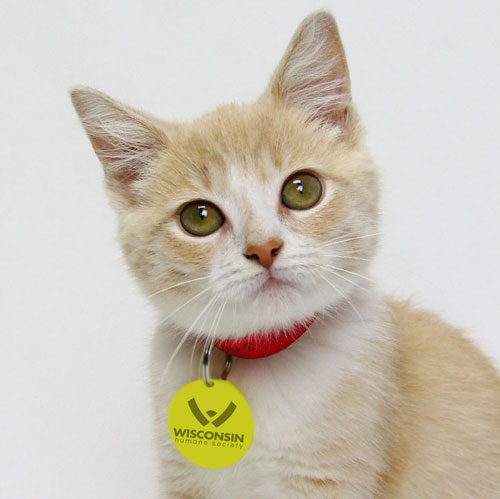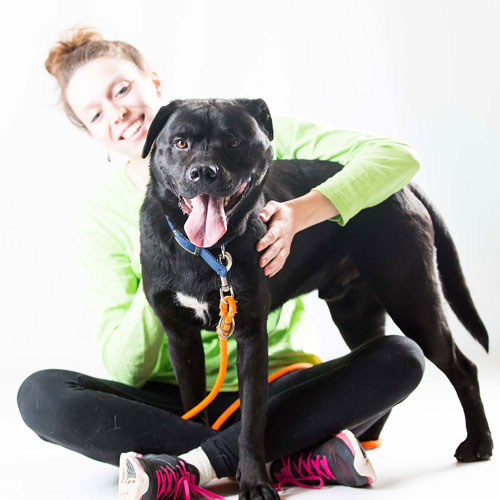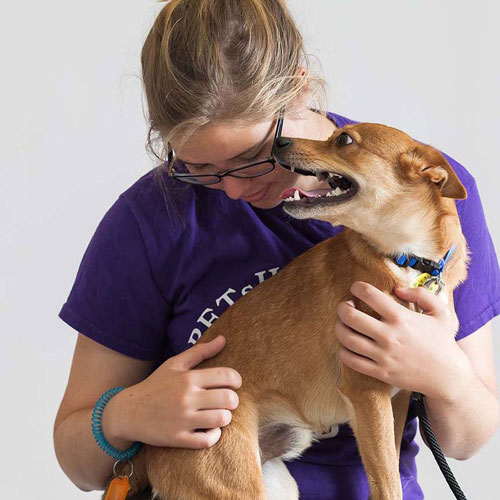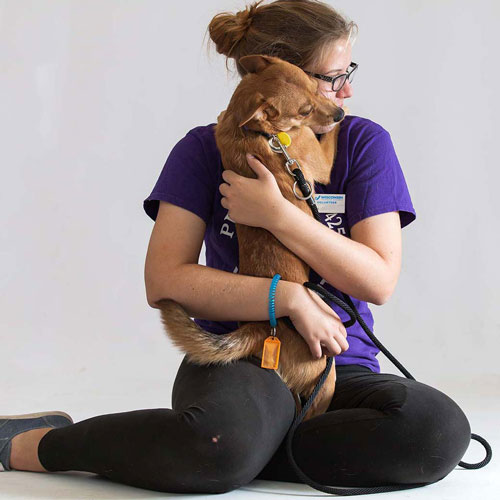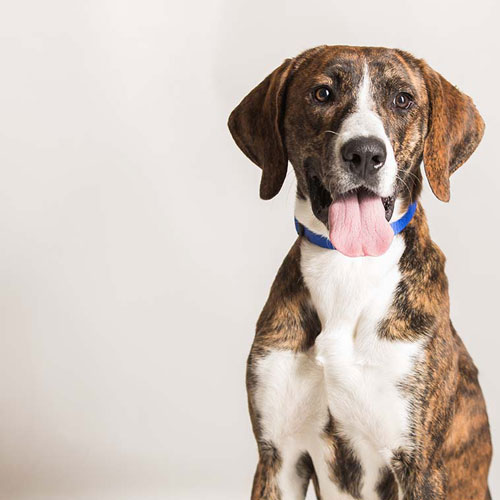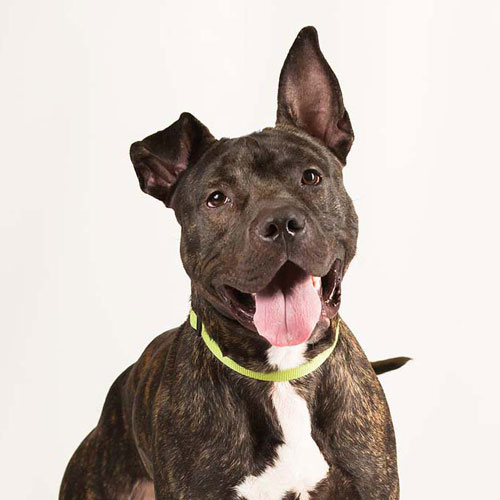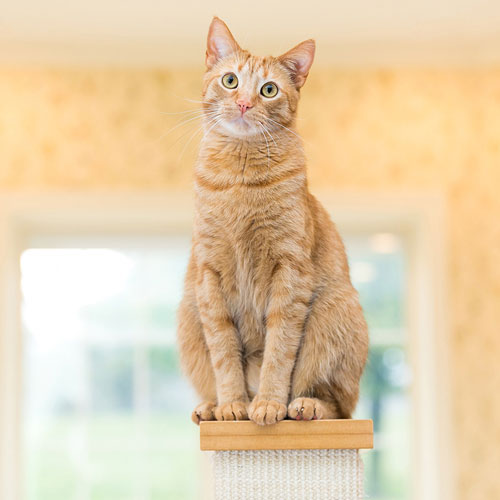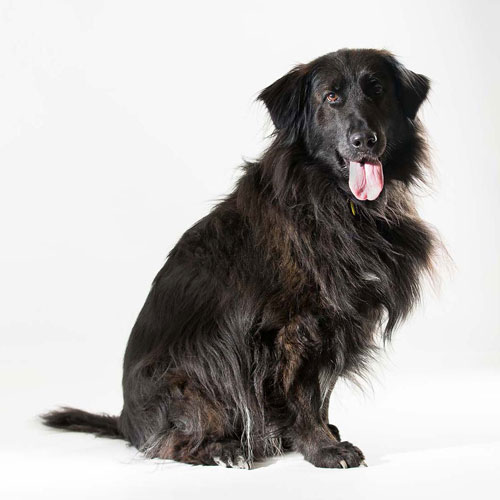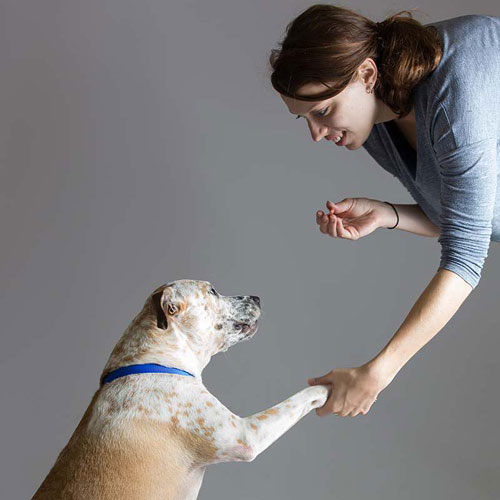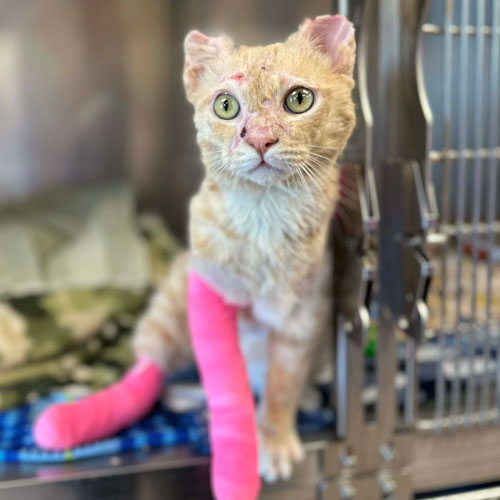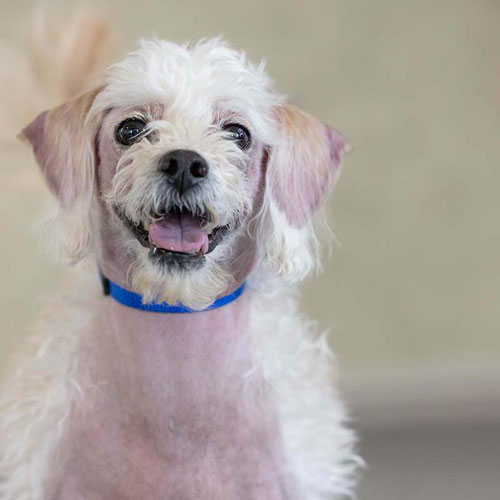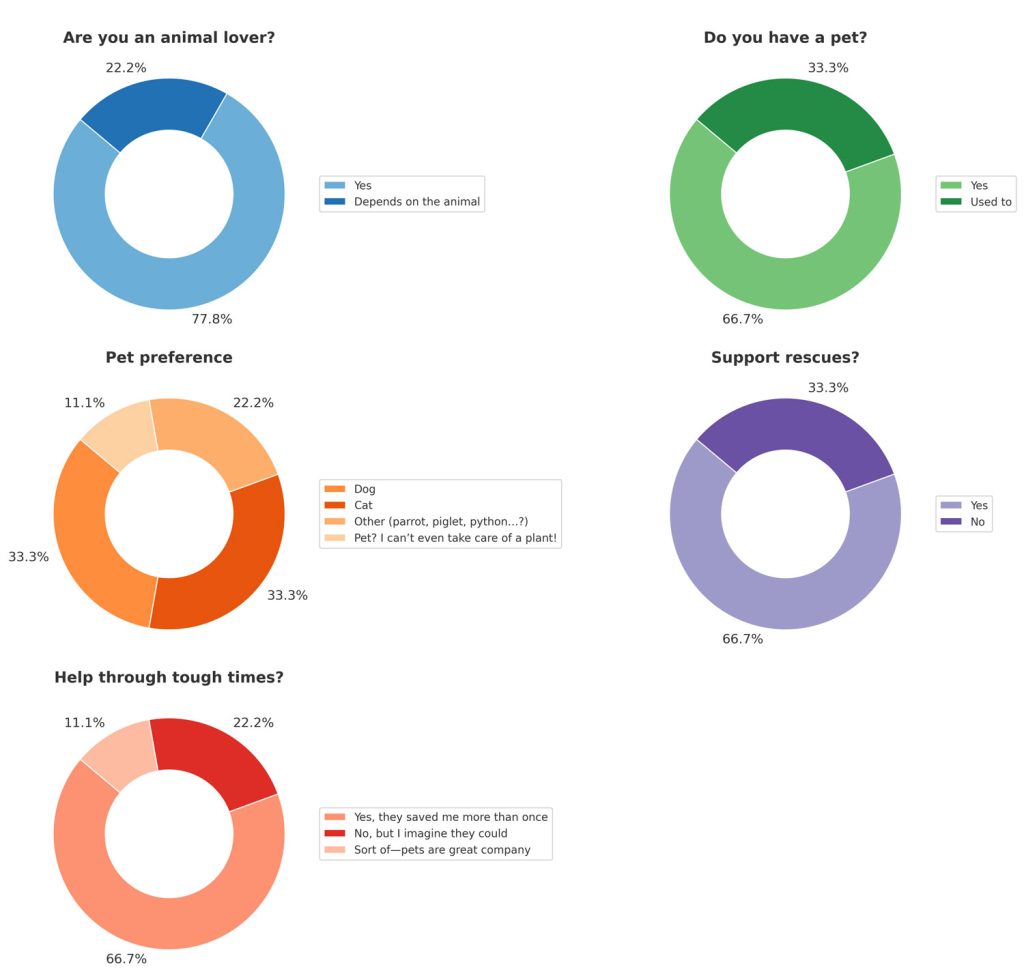Editor’s note: For this month’s cover story, I chatted with a few members of the Wisconsin Humane Society’s fundraising team — including Lizzie Covington, Vice President of Development; Stephanie Nespoli, Director of Individual & Planned Giving; and Meghan Hoffmann, Associate Director of Individual & Planned Giving. They provided some valuable insights into a fur-midable fundraising program that’s helping WHS place more than 13,000+ animals every year.
As a nonprofit focused on animal welfare, what are some of your biggest fundraising challenges and expenses?
One of the biggest challenges—or opportunities—we have is always reminding ourselves to stay nimble in this ever-changing landscape of fundraising. Sure, we have tried-and-true methods of doing this work that have been built over the years by an amazing team, but we are always looking at the data to track our success. If we spot trends of giving flattening or spiking on an annual campaign, we commit to a process of continuous improvement and look for opportunities to try something new and exciting.
Our biggest expenses in fundraising continue to be what many others in the industry face. For instance, events and direct mail continue to be amazing connection points for WHS with our community supporters, but the costs of putting on a beautiful gala and mailing appeals to our donors continues to rise.
Have you seen an increase in the need for your services over the years?
Over the last few years, animal welfare organizations across the country have been in crisis mode. They are overwhelmed by, and overflowing, with animals in need. We are overwhelmed and overflowing. The number of lost and surrendered animals coming to our doors has skyrocketed, and we’ve been flooded with inquiries from pet owners seeking help to keep their animals.
Our community and communities across the country are facing concurrent systemic challenges. Challenges like housing instability—for so many, buying a home is simply out of reach, and finding an affordable rental is hard enough on its own, much less housing that allows pets of all shapes, sizes, and breeds. Families are left to choose between putting a roof over their head or keeping their beloved pets.
There’s also the steeply rising cost of caring for an animal. From the price of food to the cost of basic preventative care, it costs more today than it ever has to care for your pet. And should the worst happen and your pet need emergency veterinary services, you’re facing thousands of dollars in medical expenses.
As our country experiences a nationwide veterinarian shortage, even getting your pet in to see a vet is a challenge.
When all these forces come together, it’s easy to see how people who love their animals can find themselves in a heartbreaking situation in the blink of an eye.
How do you use planned giving to support your mission?
Planned gifts have always been a consistent and significant source of support for WHS’s work. As a 146-year-old organization, WHS’s planned giving program has been building and growing many decades. When the organization outgrew their initial rented space, the first animal shelter in Milwaukee was constructed in 1926 thanks to a generous bequest.
Today, our planned giving efforts have ramped up profoundly … We learned and adjusted a lot during the COVID pandemic, but one unexpected outcome was that it opened our eyes to the need and significance of planned gifts. Bequests we received during the pandemic and in recent years have been critical in sustaining our work.
We set goals to diversify and expand on WHS’s planned giving program to have a multifaceted approach to engage new and existing donors. We broadened the types of planned gifts we highlight. We integrated new digital tools, like a free online will creator. We re-thought outreach plans, increasing internal and external awareness and knowledge, and made planned giving a stronger and more deliberate part of our strategy.
Bequests and beneficiary designations are our most popular form of planned gifts. However, while reviewing our program and targeting areas of enhancement and improvement, it was clear there was a bottleneck in the realization process. At the time, we had a multitude of open planned gifts, each one requiring different support. The longer our internal processes took, the longer it took for the gifts to be received, and the more delayed our incredible donors’ impact was … Organizational processes were created for both hard and digital copies of gifts, which are now audited quarterly. The team also created a management system for tracking all open gifts to ensure we have a detailed account of what we’re expecting, whom our contacts are, and what stage in the process they’re in. With these systems in place, we’re now managing more open estate gifts monthly and still completing them in half the time it previously took.
What’s your “secret sauce” for success?
Our long-term goals primarily focus on people. We are incredibly intentional about how we connect with supporters, as well as how we interact with our primary contacts of estates: legal teams, financial professionals, executors, families, etc.
Our efforts revolve around:
- Properly engaging and stewarding our Buster’s Legacy Society, our network of legacy donors, so members can know and see their impact now.
- Identifying and capturing folks who have included us in their plans but hadn’t previously told us. Getting their intentions into our system allows us to add them to our Buster’s Legacy Society, allowing for meaningful connections and contact to be made.
- Creating opportunities for individuals to involve us in their estate planning processes by hosting information sessions, offering expert-led roundtable discussions, and creating safe and inviting spaces to have difficult but informative conversations. For example, newly this year, the team established our “Lattes & Legacies” series where we partnered with area coffee shops to host tableside chats with our Individual & Planned Giving team with coffee, treats, and puppies to cuddle during National Estate Planning Awareness Week.
- Developing trusting and reliable relationships with all outside parties who are involved in the estate planning process. We offer the opportunity to support our donors in conversations with their legal or financial advisors, and have improved our communication for a better client experience.
Part II: Best in Show:
How the Wisconsin Humane Society Unleashes Its Fundraising Potential
Could you tell us about the annual Buster’s Legacy Luncheon?
We started it nearly 20 years ago, but more recently solidified it as a staple annual event. We invite members of our Buster’s Legacy Society—those who have included WHS in their estate plans—to join us for a special presentation by our President & CEO, Alison Fotsch, who shares a “state of the organization,” and a staff speaker who highlights a program at WHS that demonstrates the value and impact of gifts.
It’s a wonderful opportunity for supporters to get an inside look at the work happening across all our campuses, and one of our most meaningful engagement opportunities—specifically for legacy supporters.
Over the years, this luncheon has grown alongside our expanding Legacy Society membership, and we’re excited to see that trend continue. While we do offer a few perks to our members, the luncheon consistently stands out as a highlight. Attendees leave with a deeper understanding of the world of animal welfare and the powerful impact their planned gift will have on animals—and the people who love them—for generations to come.
Where do the majority of WHS’ planned gifts come: existing supporters, or new donors?
This was a powerful insight for our team. As we’ve expanded our efforts over the years, we’ve noticed that most realized estate gifts come not solely from our major donors, but from our supporters who may have given modestly—often just once or twice. When we looked closer, we found that many of these donors had come to WHS seeking our services: they adopted from us, surrendered a pet, used our veterinary services, brought in a sick or injured animal to our Wildlife Rehabilitation Center, or trusted us during a pet’s final moments. We’re deeply grateful that, in return for the care they received interacting with our organization, so many chose to support us in such a meaningful and lasting way.
This discovery also opened our eyes to the importance of fostering a culture of philanthropy within the Wisconsin Humane Society. While it’s our job to ensure these gifts are cultivated, and then properly stewarded and realized, it is also our job to ensure that our frontline staff are aware of the immense impact their judgement-free, people-centered approach to animal welfare work is having on the amazing clients we serve. Helping our team see how closely tied they are to these gifts brings another layer of meaning and significance to the compassion, empathy, and ingenuity that they bring to work. We are therefore intentional about sharing the story of legacy gifts internally to celebrate everybody’s role and impact in philanthropy.
What kind of marketing do you do around your planned giving program?
We take a multi-channel approach to marketing our planned giving program, which has proven to be quite effective. Throughout the year, we share electronic newsletters and targeted eblasts during key times such as Make a Will Month, National Estate Planning Awareness Week, and at year-end to encourage stock or IRA distribution gifts. These timely messages help keep planned giving top-of-mind for our supporters.
In addition to newsletters and eblast outreach, we also use social media to raise awareness and engage our community. We complement our digital communication with direct mail efforts, including planned giving articles in our quarterly newsletter, Critter Chronicles. We’re fortunate to also have several regular TV segments on local channels in which we can promote planned giving opportunities.
One of the most impactful marketing strategies has been sharing testimonials from members of our Buster’s Legacy Society. Their personal stories about why they chose to include WHS in their estate plans have resonated deeply with our audience and helped inspire others to consider doing the same.
Are you seeing an average size to the planned gifts?
The size of planned gifts we receive varies widely. While we occasionally receive smaller gifts in the $100 to $1,000 range, the majority tend to fall between $5,000 and $100,000. Of course, we are deeply grateful for every gift—no matter the size.
Can you tell me about recent gifts that have really stood out?
A couple of years ago, we received a generous gift from a long-time supporter’s estate after they passed. Their only request for this gift was that it be used to inspire others to give via matching opportunities. This donor’s wishes have been realized through several campaigns garnering hundreds of donors and dollars to support animals and the people who love them. We have continued to be blown away at the impact this gift has on our work today and into the future as it brings additional community supporters into the WHS family.
More recently, we received a $500,000+ estate gift from a couple who’d up until this point had a combined giving total of $125. Upon further investigation, we discovered they had worked with our adoption counselors to adopt several animals from us over the years. This wonderful gift and legacy will help countless animals and their people; it reminds us to always remember the depth of the human-animal bond and the opportunities that lie within each interaction a community member has with WHS.
Please tell us a little about your approach to stewardship, and what you’ve found is most effective.
We talk a lot about forgoing the “golden rule” for the “platinum rule” when it comes to our stewardship approach. It isn’t effective to treat donors the way that we’d want to be treated after giving a gift, because we’re all such different people who have varied relationships with recognition, finances, and philanthropy. What we need to rely on is the information we receive from our donors. We connect with them, learn their interests and motivations, understand the impetus of their gift, and we lean heavily into all of that while stewarding. Then, we keep learning. We keep listening. Our mindset is that a good stewardship program is one that is never complacent or standardized; it’s personalized, specific, and evolving with the donor. We also have the best pups, cats, and critters to share with donors, which makes stewardship extra fun!
If you could give one piece of advice to pet owners, what would it be?
For pet owners, thank you for sharing your life with an animal! Our best advice would be to recognize that your local animal welfare organizations are wonderful resources – from pet supplies to training resources to assisting you with issues along the way, the expertise that they can offer is valuable. Also, your local animal welfare organization probably needs your help – with the current influx of animals into the sheltering system, help is needed in all forms from volunteering and fostering animals, to donating and simply spreading their news on social media.
